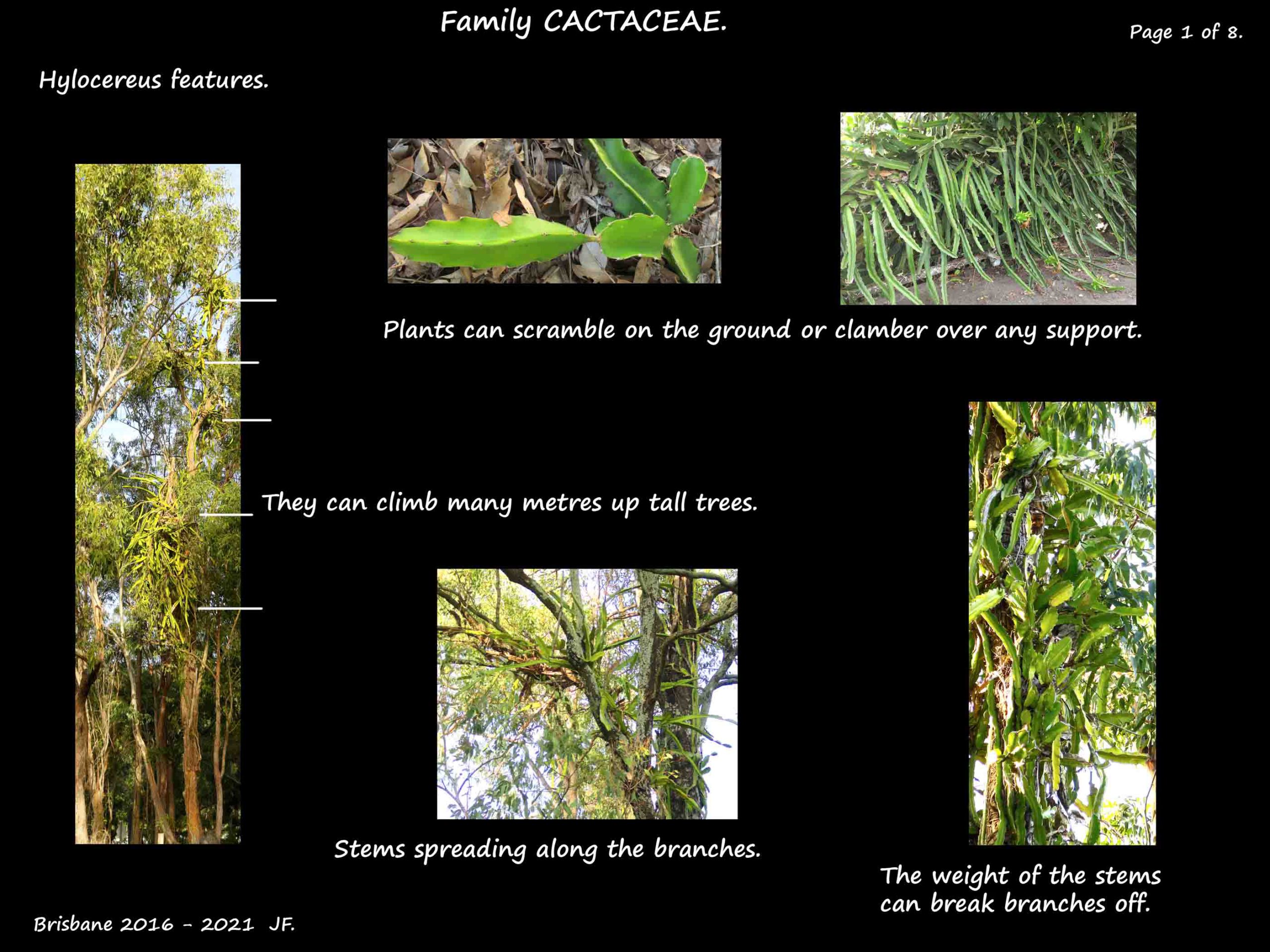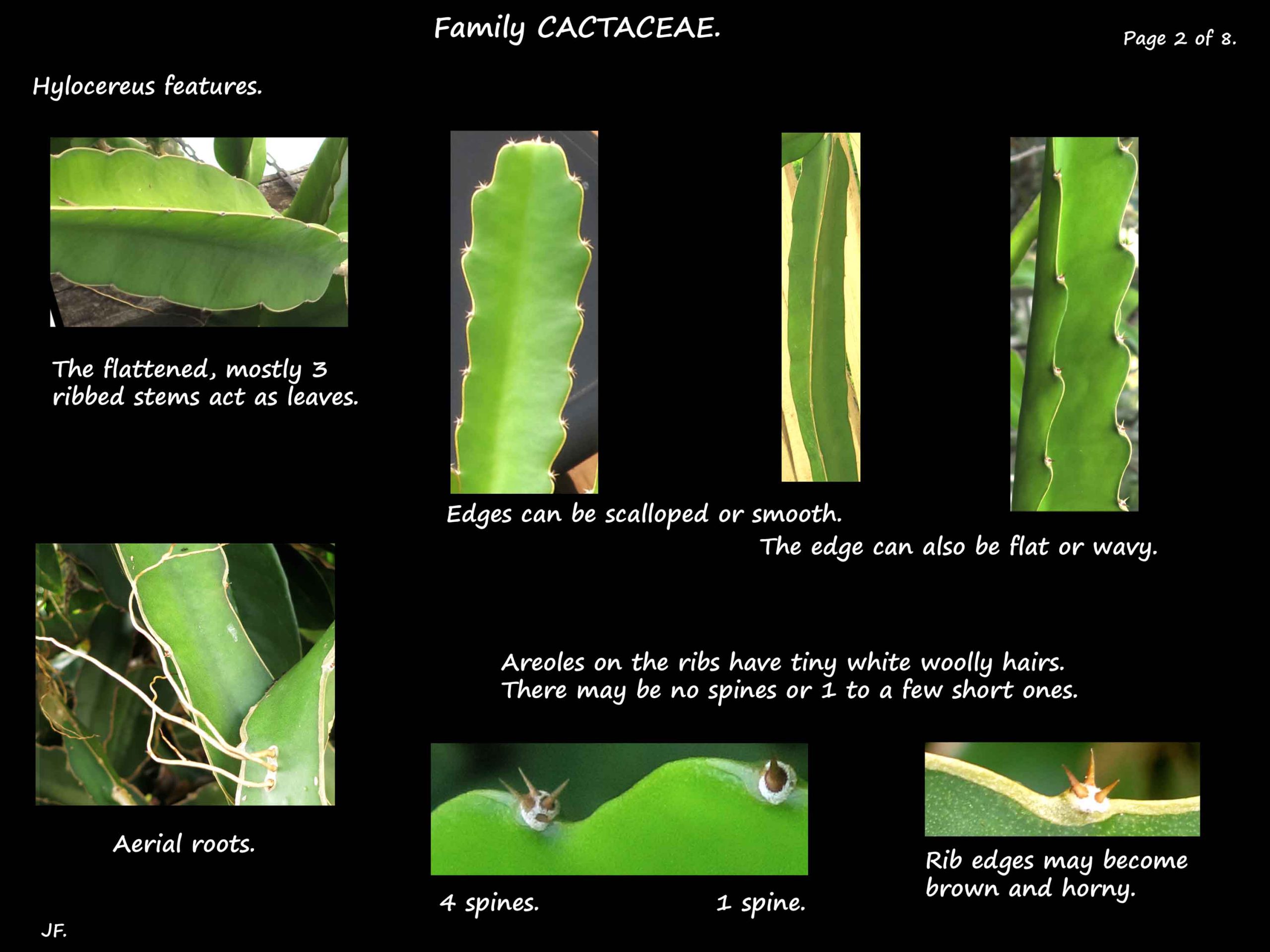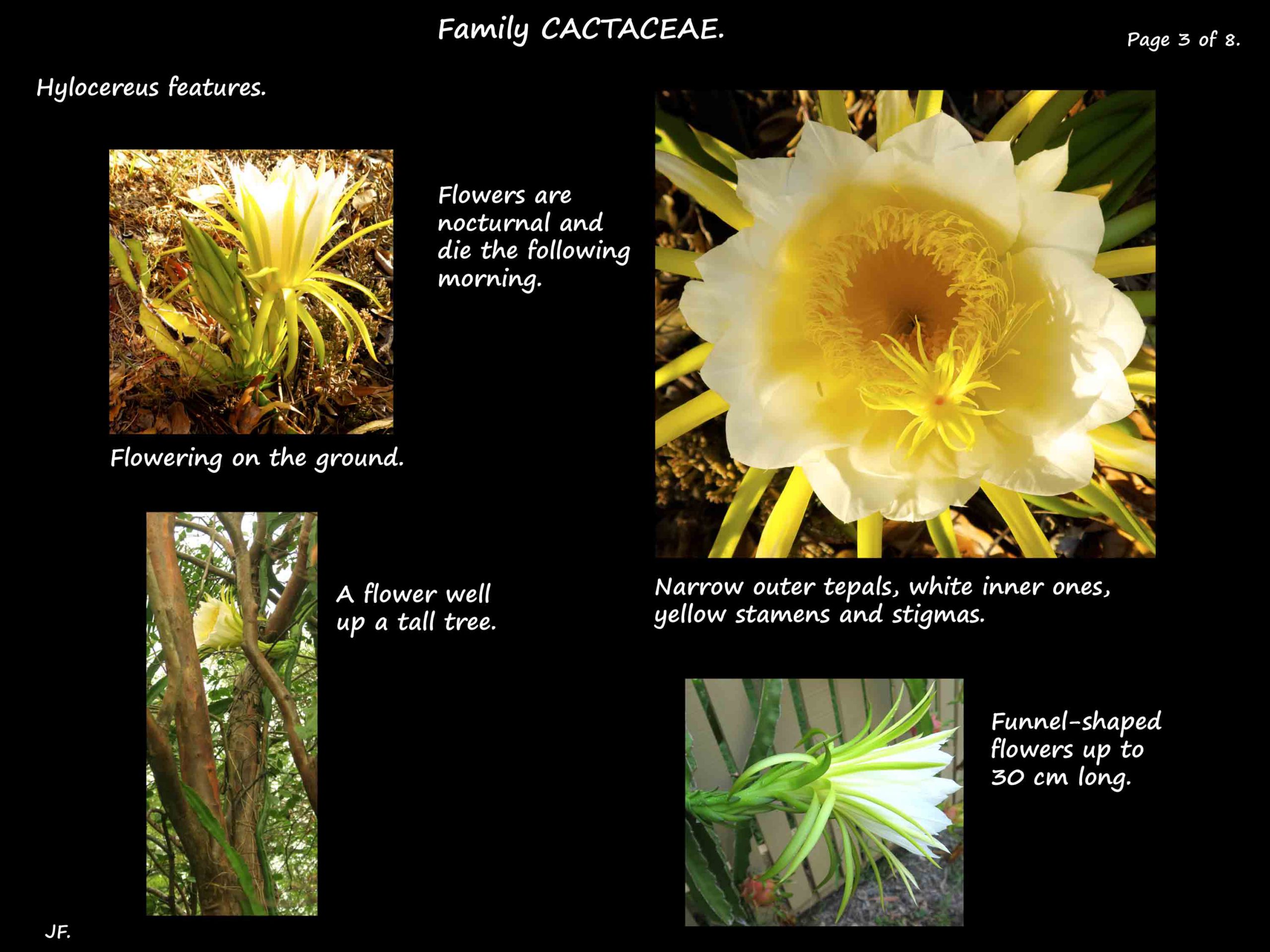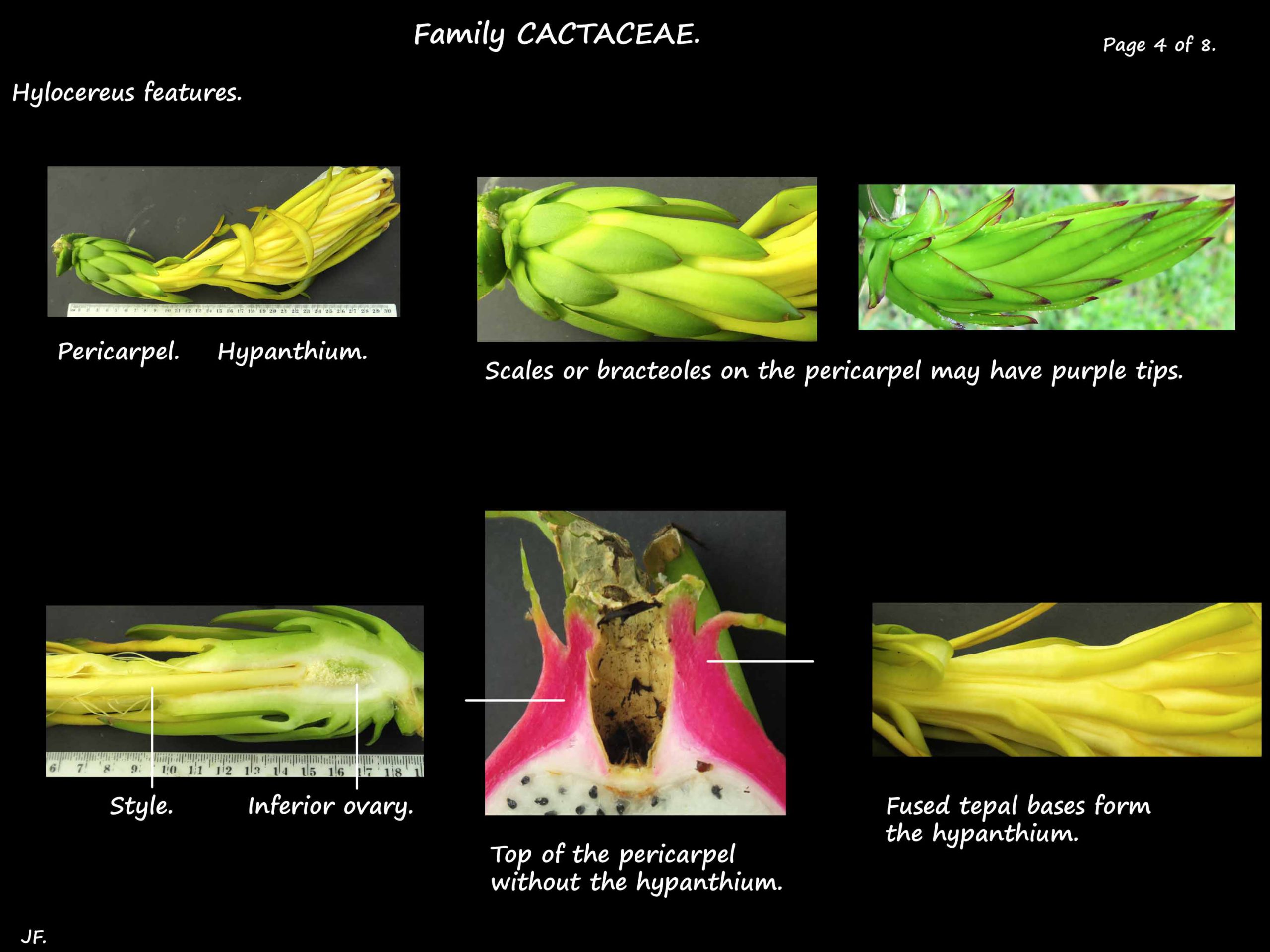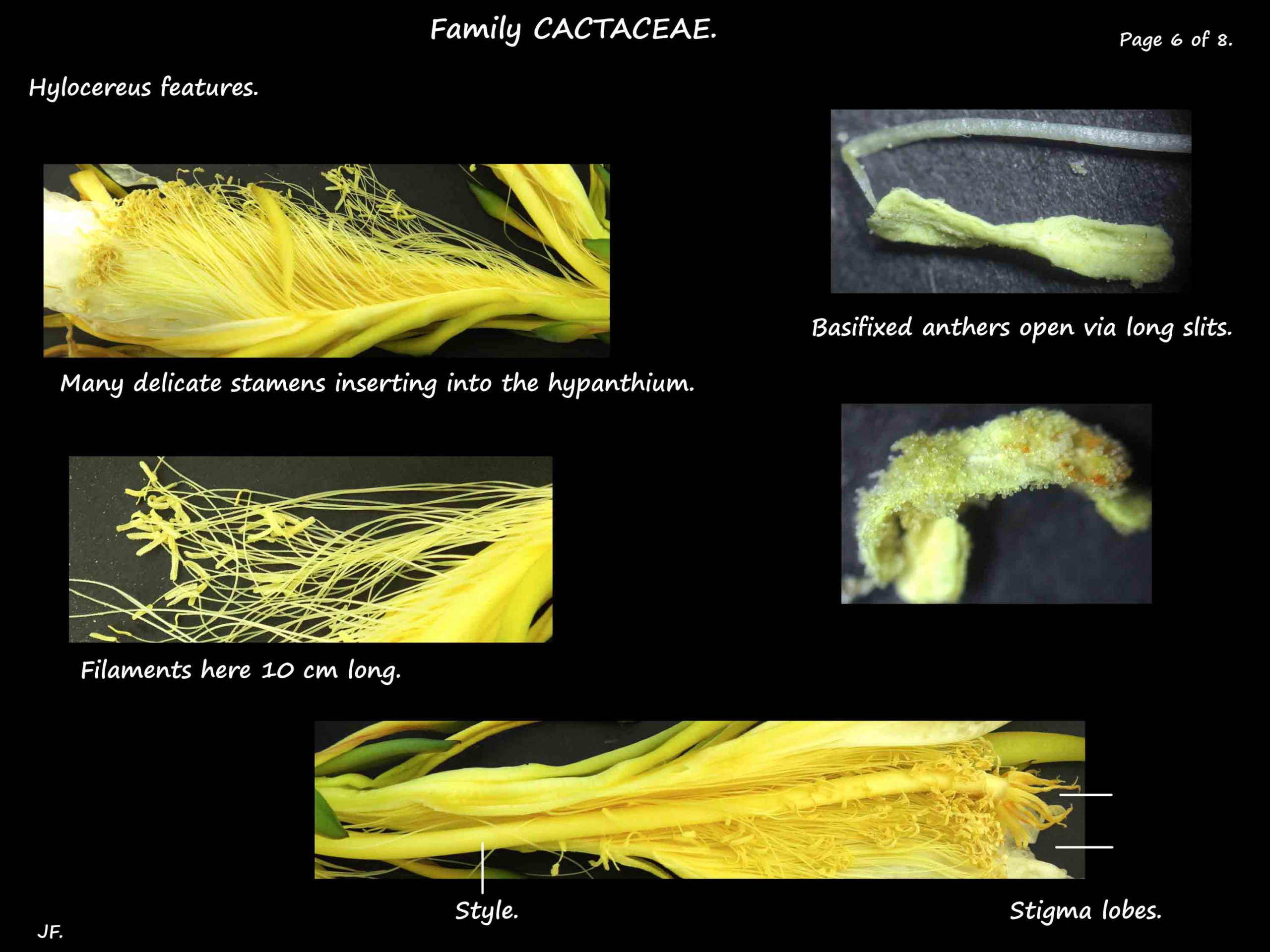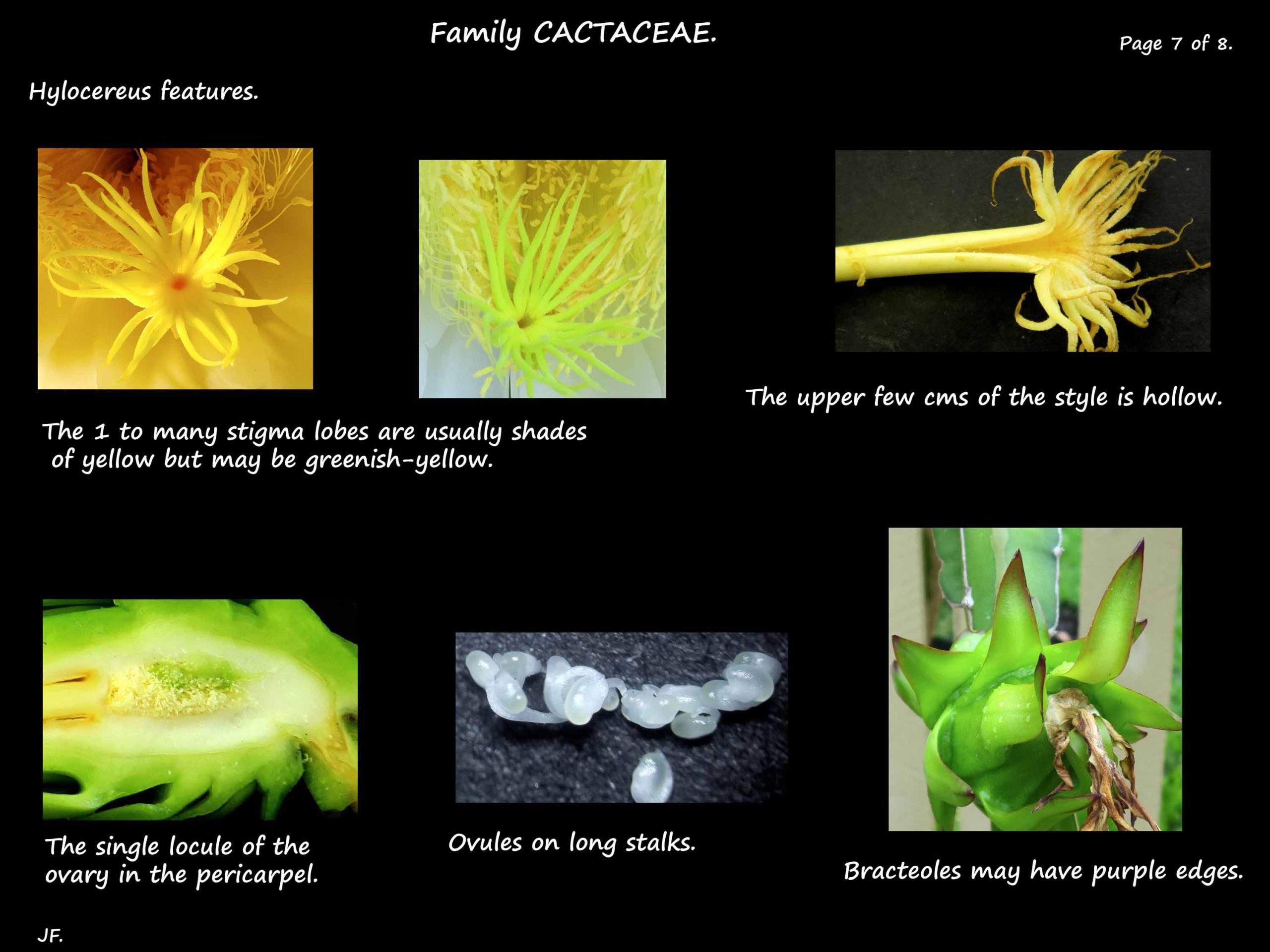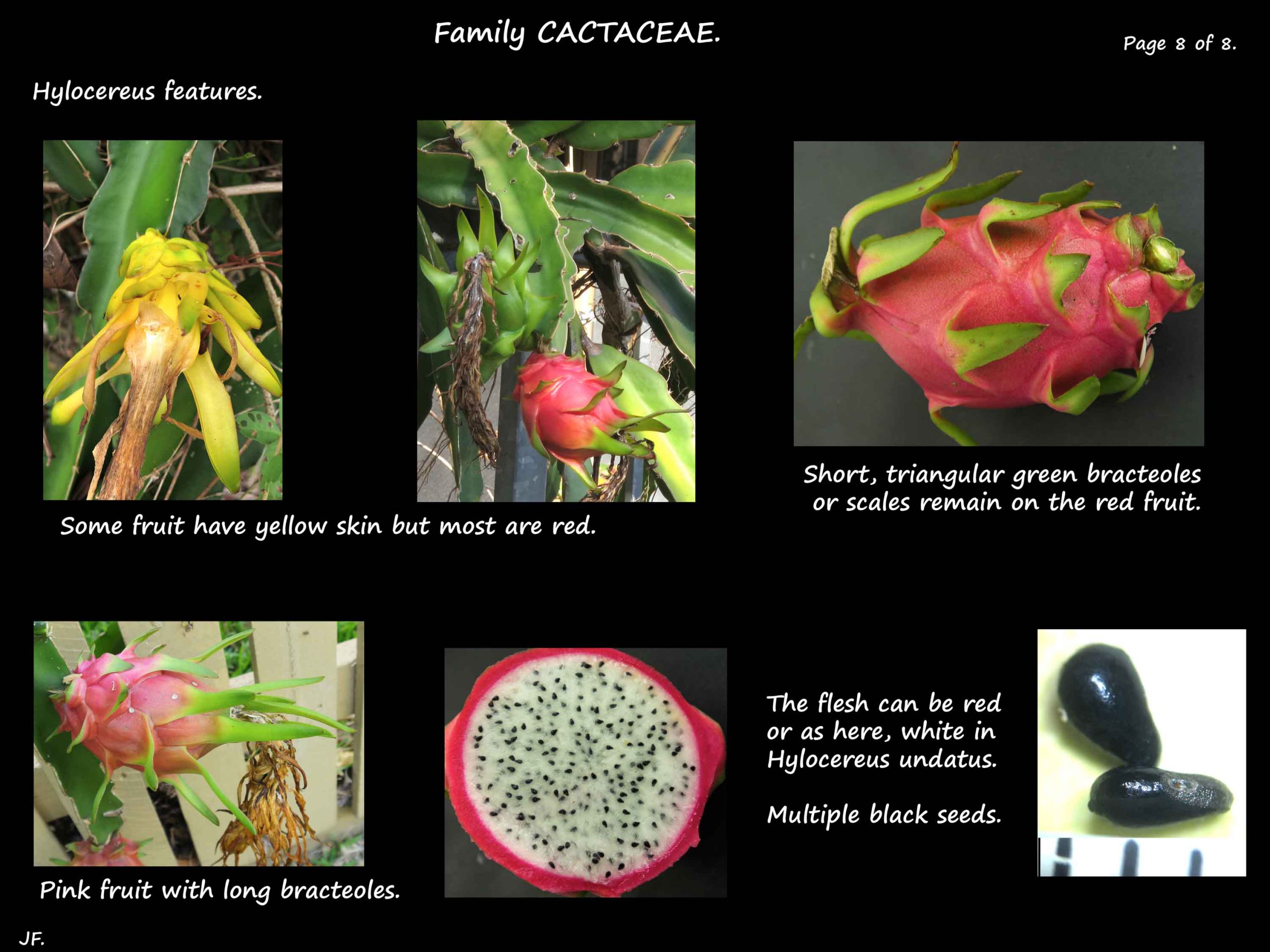Hylocereus.
Family Cactaceae > Subfamily Cactoideae > Genus Hylocereus.
Some Hylocereus species are also seen as Selenicereus species.
There are 15 species that are native to Central and South America.
A few are grown commercially for the fruit and some as ornamentals for the large flowers.
They (and some species in other genera) are commonly known as Dragon Fruit or Pitaya.
They can scramble on the ground, clamber over any support, climb or be epiphytic.
The segmented, succulent stems are up to 10 m long and mostly have 3 angles or ribs.
The edge of the ribs can be smooth or wavy and sometimes becomes horny with age.
The green or blue-green segments commonly have aerial roots.
The areoles mostly have short spines but may have none.
The nocturnal, white, funnel-shaped flowers are up to 30 cm long.
The basal few cms is the pericarpel with large, leaf-like scales or bracteoles.
The fused tepal bases form the longer tubular section or hypanthium.
The outer tepal lobes are narrow and yellow-green and the wider inner ones are typically white.
The numerous stamens insert into the tube for much of its length.
The inferior ovary is surrounded by receptacular tissue from the stem (pericarpel).
The style can have 2 to many yellow or lime-green stigmas.
The fruit are round to ovoid, fleshy berries with wide scales.
The skin can be green, red or yellow and the flesh red or white.
There are many small black seeds.
Only a few of the 15 species are grown commercially for the fruit.
Red fleshed ones are Hylocereus costaricensis and Hylocereus monocanthus.
White fleshed are Hylocereus undatus (red skin) and Hylocereus megalanthus (yellow skin).
J.F.
